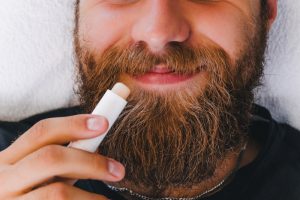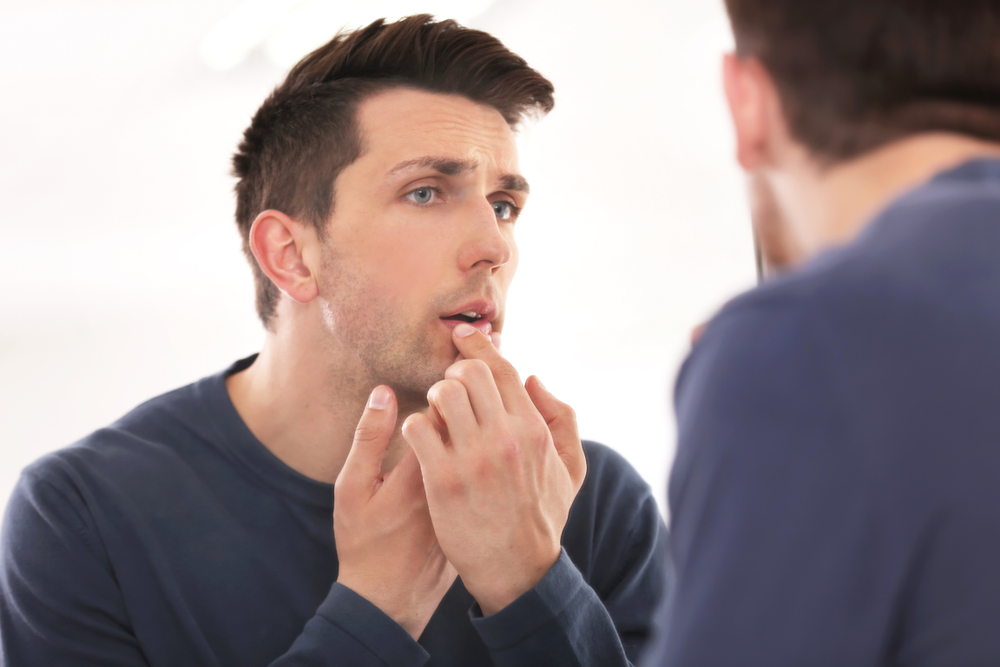Cold sores or fever blisters are a contagious common viral infection caused by two herpes viruses, herpes simplex virus type 1 (HSV-1) and herpes simplex virus 2 (HSV-2). The blisters are small and filled with fluid that grows in patches on and around the lips. The blisters would, later on, turn into a scab once it breaks. Although the scab can last for several days, the viral infection typically heals on its own around two to three weeks. To lessen the recovery time, doctors prescribe certain antiviral medications that specifically target herpes-related diseases.
Differentiating Cold Sores and Canker Sores
Some people confuse cold sores for canker sores. Therefore, it is important to check the symptoms for both cold and canker sores before purchasing medicines.
Cold sores are characterized in three phases:
- Cold sores typically appear as itching, burning, or tingling sensations on and around the lips. This symptom usually lasts for two days which will then be replaced by tiny yet multiple painful spots on the irritated area.
- The painful spots will turn into small blisters filled with fluid. Although blisters commonly emerge on the area around the lips, they can also appear on the nose and cheeks.
- The fluid-filled blisters will burst after a few days. The open sores turn into scabs which is the crusting of the skin.
Now, let us differentiate cold sores from canker sores:
 While cold sores are formed around the mouth or lip area, canker sores are ulcers that commonly appear within the mouth or near the surface of the lips.
While cold sores are formed around the mouth or lip area, canker sores are ulcers that commonly appear within the mouth or near the surface of the lips.- A virus called herpes simplex virus causes cold sores. On the other hand, canker sores are neither caused by bacteria or viruses. Even medical experts cannot determine its cause. However, it is theorized that canker sores only appear when the immunity of the body is compromised, under stress, or follows after an injury inside the mouth.
- Unlike cold sores, canker sores cannot be transferred via direct contact on the lips, mouth, or genitals.
- There are no prescribed medications for canker sores. However, it is possible to alleviate the symptoms via topical and over-the-counter treatments.
Medicines for Cold Sores
Although cold sores naturally heal even without treatment, one can still benefit from prescribed antiviral medicines to manage the outbreaks and speed up the healing process. Some of the prescribed antiviral treatments are valacyclovir, acyclovir, famciclovir, and penciclovir.
- Perhaps the most generally prescribed medication for herpes infections like cold sores and genital herpes is valacyclovir. It is also common for doctors to prescribe valacyclovir as the first choice of medication. It was only in 1995 when the US Food and Drug Administration (FDA) approved valacyclovir for oral use. Oral valacyclovir is an antiviral drug used in treating various herpes infections like cold sores (HSV 1 and 2), genital herpes (HSV-2), and shingles (varicella-zoster virus). This drug cures herpes infections by inhibiting the virus from multiplying. Once ingested, valacyclovir converts into acyclovir which is an active substance. Acyclovir is responsible for reducing the ability of herpes viruses to reproduce, thus managing the outbreak and speeds up the recovery time. Oral valacyclovir functions almost immediately after one ingests it. However, it takes time before the drug completely heals cold sores, which can take up to 10 days. According to Spruance (2003) and Hollier (2015), there are medical studies that can attest to the role of valacyclovir in speeding up the healing of herpes infections, minimizing the chances of herpes from recurring, and reducing the chances of herpes transmission to other people.
- Acyclovir is an antiviral treatment against cold sores, genital herpes, and shingles which was discovered in the late 1970s. Before valacyclovir became common, acyclovir used to be the most preferred treatment for herpes infections which lasted for decades. Much like valacyclovir, acyclovir also suppresses the reproduction of the herpes virus by targeting its DNA. However, what makes acyclovir inferior to valacyclovir is that the ability of the human body to absorb this drug, also known as bioavailability, is only roughly 20% of the dosage. This would mean that increasing the dosage is necessary to make up for the low bioavailability level of the drug. Oral valacyclovir, on the other hand, has a bioavailability level of around 55% percent. This is the reason why valacyclovir is currently the first line of treatment preferred by doctors.
- Another antiviral treatment against herpes infections is famciclovir. This drug is generally prescribed for treating shingles only, thus differentiating famciclovir from valacyclovir and acyclovir. Both valacyclovir and famciclovir are prodrug versions of acyclovir and penciclovir, respectively. Prodrug simply means that it is a medication that converts into another active ingredient to ensure that it is better absorbed in the body.
- The use of penciclovir as a treatment for cold sores only gained FDA approval in 1996, much later than valacyclovir. This drug has an oral bioavailability level lower than that of acyclovir. Because of this, penciclovir is typically in the form of a topical treatment. Some branded cold sore medications that have penciclovir as an active ingredient are Denavir, Vectavir, and Fenivir.
Other Treatments for Cold Sores
Apart from the mentioned prescribed antiviral drugs, over-the-counter treatments are also available. Unlike prescribed medications which target the cause of the infection at its core, these over-the-counter treatments only provide one-time healing since it does not prevent future cold sore breakouts.
- Docosanol. Commonly known with its brand name Abreva, docosanol is available over-the-counter that is topically applied on the affected area. This ointment shortens the recovery time of cold sores.
- Lip balm or moisturizer. It is generally preferred to apply lip balm, petroleum jelly, or moisturizer with SPF on and around the lips to assist in the healing process. Not only will it soothe the affected area, but it also shortens the healing time of cold sores. It is important to keep the wounds moisturized to avoid reinjuring the wounds.
- Topical analgesics. Relieving the discomfort of cold sores can also be achieved via over-the-counter creams and ointments that have lidocaine or benzocaine. One well-known ointment brand is Orajel. These types of pain-relieving creams are available both in generic and prescription forms.
- Cold compress. Applying a cold compress on irritated skin is another way of keeping it moist. This alleviates the pain and softens the scabs as well.
- Over-the-counter pain relievers. Some pain relievers also help in relieving the pain and discomfort brought by cold sores. Among the most common pain-relieving drugs are ibuprofen and acetaminophen.
Identifying the Best Cold Sore Treatment
 The best medicine for cold sores is one that has a high bioavailability level. This makes valacyclovir, the prodrug version of acyclovir, and famciclovir, the prodrug version of penciclovir, the most preferred treatments. A thorough study focused on comparing and determining the best out of these drugs is not yet available. These prescribed antiviral medications lower the chances of acquiring the same herpes virus in the future, as compared to home remedies or over-the-counter treatments, which only control the symptoms.
The best medicine for cold sores is one that has a high bioavailability level. This makes valacyclovir, the prodrug version of acyclovir, and famciclovir, the prodrug version of penciclovir, the most preferred treatments. A thorough study focused on comparing and determining the best out of these drugs is not yet available. These prescribed antiviral medications lower the chances of acquiring the same herpes virus in the future, as compared to home remedies or over-the-counter treatments, which only control the symptoms.



